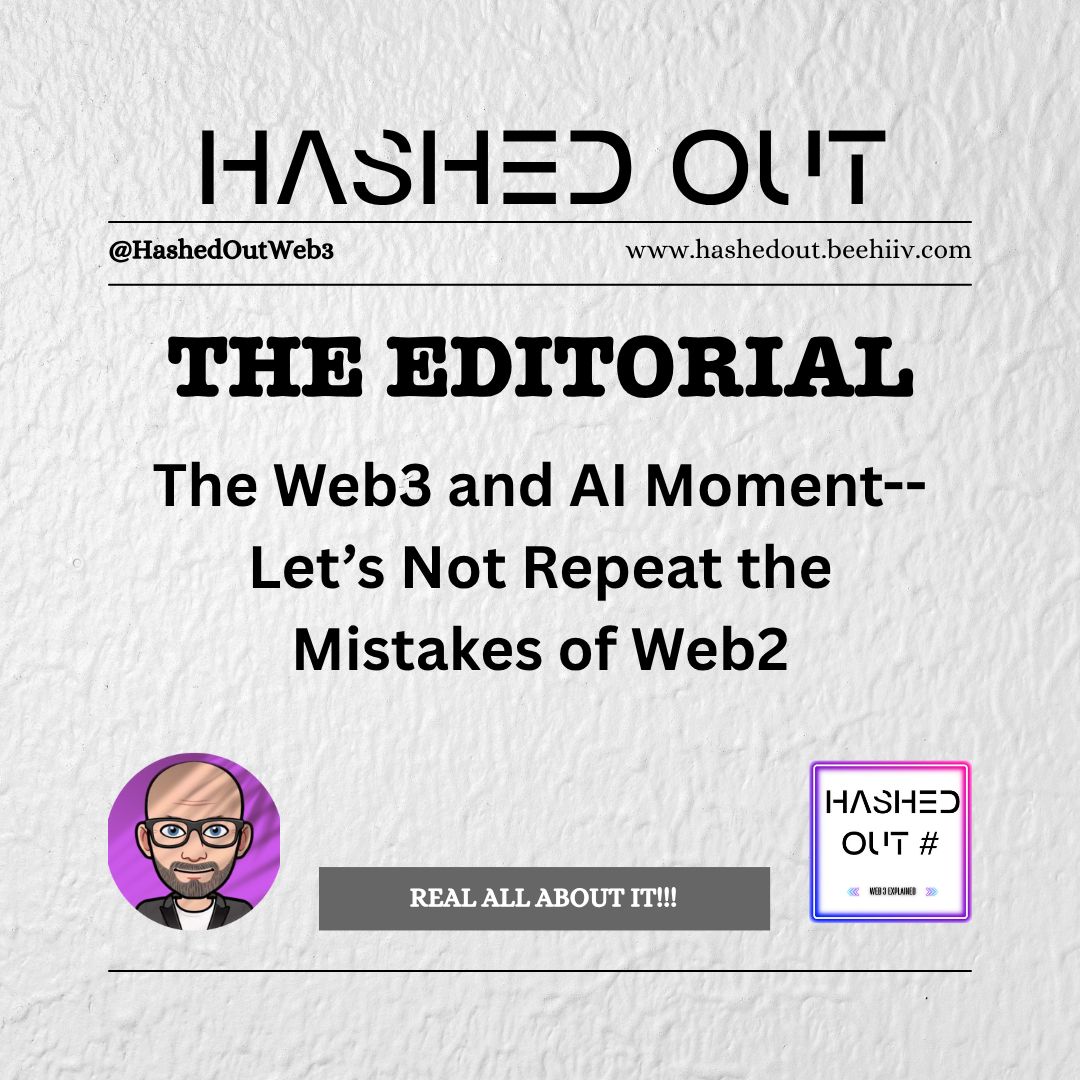- Hashed Out
- Posts
- The Web3 and AI Moment--Let's Not Repeat the Mistakes of Web2
The Web3 and AI Moment--Let's Not Repeat the Mistakes of Web2
Web3 offers a better path for AI — if we’re smart enough to take it.

Not long ago, we gave away the keys to the kingdom.
For free email, unlimited photo storage, social feeds, and slick recommendation engines, we handed over our data — names, clicks, preferences, location histories, family photos, everything. In return, we got convenience.
Convenience has merits and appeal. The tradeoff felt harmless at first. But by the time we realized what had happened, the system had already locked in: a handful of tech companies sat atop massive, centralized data empires that no one voted for and no one could opt out of.
That was the Web2 deal. It is a freemium business model that is not really free. Once you have stored years worth of data on a particular platform, built a social audience or community of friends, the ability to leave that platform becomes very limited. And what if one of those platforms shuts down?
Today, a new revolution is underway — artificial intelligence. And once again, the deal looks familiar:
Your data helps train the models.
Your clicks and behavior fine-tune them.
Your voice, face, and style may be mimicked.
But you don’t own the results, influence the rules, or benefit financially.
It’s the same pattern — only this time, it’s moving faster and going deeper.
So here’s the question:
Do we want to repeat the same mistakes with AI that we made with Web2?
Web3 Offers Us a Second Chance
Web3 isn’t just about crypto speculation or quirky NFTs. At its core, it’s about rethinking how the internet should work — who owns it, who benefits from it, and who gets a say in how it evolves.
And that matters a lot when it comes to AI.
AI needs fuel — and that fuel is data. But Web3 says data isn’t just raw material to be mined. It’s something people can own. Something they can permission. Something they can profit from if they choose.
AI needs rules — but right now, those rules are being written behind closed doors. Web3 introduces the idea of open governance — letting users, developers, and communities help shape the systems that shape them.
AI will increasingly touch everything: work, education, media, politics. That’s not science fiction. That’s next year or even this year in many cases.
So if ever there was a time to build smarter — this is it.
Don’t Sleep on Web3
It’s easy to get swept up in the AI hype cycle. The demos are dazzling. The possibilities feel endless. Everyone’s launching a product, a plugin, or a prompt marketplace. How many of the websites, apps, or other platforms that you use suddenly have an AI feature that has been added in the last year? The wildfire-like growth has been staggering.
But let’s remember: intelligence without alignment is dangerous.
AI without ownership is exploitative.
AI without transparency is untrustworthy.
AI without collective governance is just another top-down system.
Web3 doesn’t solve everything. But it offers the scaffolding to make AI fairer, more transparent, and more aligned with human values — if we use it.
We missed the moment with Web2. We trusted too much, too fast. The idealistic promise of the original internet held by its founding pioneers was lost, or stolen, before it could be realized.
AI and web3 both offer a fresh opportunity to achieve the digital world those pioneers saw as possible. Let’s not miss it again.
Stay ahead of the curve with the latest in Web3 culture and innovation. Subscribe to Hashed Out for exclusive insights, case studies, and deep dives into the decentralized future.
Other Articles In This Issue:
